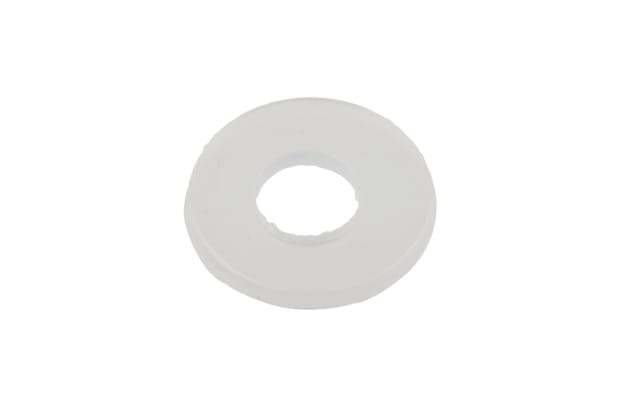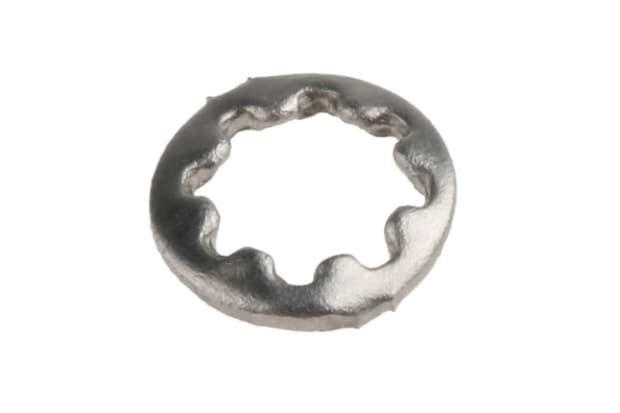- Published 12 Jan 2023
- Last Modified 29 Aug 2023
- 9 min
Tap Washer Buying Guide
Which tap washer is best? Our guide explains everything you need to know about the types and sizes available.

In this guide, we will cover what a tap washer does and how it works, alongside exploring the different materials and sizes of tap washer available. By the end of this guide, you should be familiar enough with the various sorts of sealing washers to be able to confidently choose the right type for your particular task.
What is a Tap Washer?
What is the Definition of a Tap Washer?
Also known as sealing washers or packing washers (in certain tap types), tap washers are simple disc-shaped devices with a central hole or opening. They function as a type of gasket that helps to seal off mains water flow behind a tap when the tap head is turned to the ‘off’ position.
What Can Tap Washers Be Used for?
Tap washers are commonly found in plumbing kits and tool boxes. The vast majority of tap washer uses are in performing quick replacement jobs. In most cases, they’re the go-to solution wherever a tap is dripping, leaking, or becoming difficult to open or close. Some examples of tap washer uses might include:
- Basin mixer tap washers
- Bath tap washer replacement
- Hot water tap washer
- Kitchen tap washers
- Lever tap washer replacement
- Mixer tap washers
- Outside tap washers
- Pillar tap washers
- Swan neck tap washers
What Does a Tap Washer Do?
Tap washers are designed to be used in nearly all types of taps, where their key role is to help control the flow of water. They can also work to prevent leaking and contamination while a tap is shut off. Regardless of the washer type and material, their basic function is to press down against the seat or flow valve on the inside of a tap assembly, creating a closed-off seal that stops water from flowing to the spout when the tap head is turned to the ‘off’ position.
How Do Tap Washers Work?
They achieve their purpose by creating an impenetrable physical barrier between the tap seat and the spout. The material construction of most tap washers also means that they’re able to fill and even out any irregularly-shaped voids between different parts of a tap fitting (generally the valve and the tap seat), effectively sealing off the tap spout from the valve.
When a tap head is turned on or off, a rotating screw forces the tap washer to move up or down (respectively) within the body of the tap assembly. This lifts it away from the seat and opens up the flow valve. In doing so, it allows pressurised mains water held in the plumbing system to pass through the tap spout at varying volumes and speeds. Key to this function is the fact that tap washers are typically made from materials that can be squeezed or compressed to form a watertight seal (although exceptions do exist for certain tap types). This enables them to seal off the valve opening more effectively, even in cases where general usage-related wear and tear has caused small surface irregularities over time.
However, there is a finite amount of wear that a washer, seat or valve opening can sustain before the sealing properties no longer work effectively. At some point, the washer or various other moving parts of a tap will need to be replaced. Most often, this is due to damage from water erosion, or physical stress and degradation caused by repeated mechanical or compression forces in normal use.
Different Types of Tap Washer
There are various different types of tap washers for sale, particularly when it comes to manufacturing materials and sizes. In the sections below, you’ll find a quick run-down of the main tap washer types you’re likely to make use of for different sorts of taps.
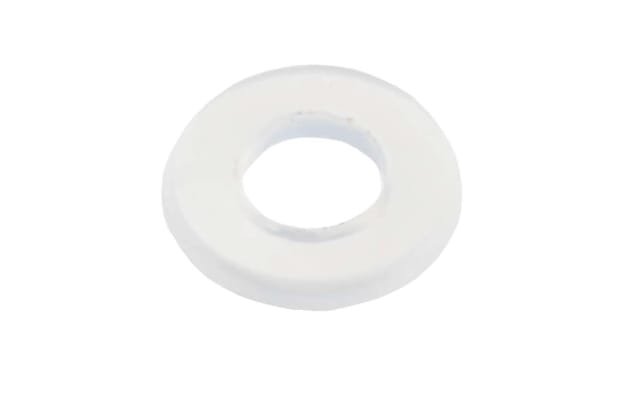
Nylon Tap Washers
Nylon tap washers are a popular option for sealing tap valves closed. Due to their properties, nylon spacer washers provide a reliable seal on most types of tap.
Typically, nylon sealing washers are chosen for offering:
- High strength
- Very good all-round wear resistance
- Low surface friction properties (nylon has a degree of natural internal lubrication) meaning it is less likely to deteriorate as quickly over time
- Reasonably chemically inert, and able to cope well with a wide range of potentially corrosive environments and substances without reacting
- Suitable for use at a wide range of temperatures without deforming
- Lightweight
- Plain nylon tap washers are cheap to manufacture and buy
- Some professionals prefer to use slightly softer parts than nylon tap washers when inserting them between very hard metals. Nylon is often favoured for softer metals, such as brass
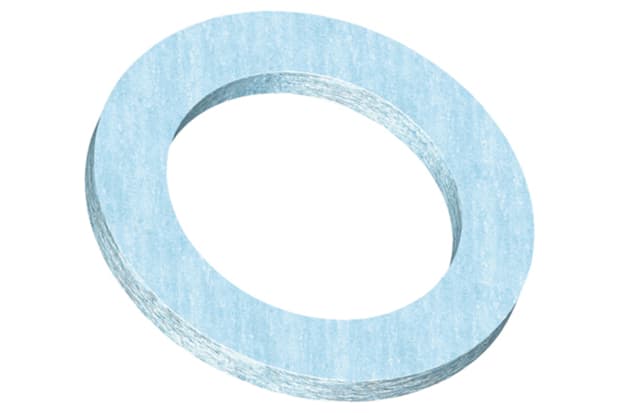
Rubber Tap Washers
Rubber tap washers are another popular choice for sealing many types of bath and sink taps. Sealing washers in rubber are sold at a wide variety of standard sizes - common requirements include the 15mm rubber washer, 1-inch rubber washer, 32mm rubber washer and 40mm rubber washer.
When it comes to longevity and function in tap washers, rubber is considered to share many of the properties of nylon, although overall it is a much softer and more pliant material. This can mean that it creates a more effective seal against certain harder materials, or where there is more surface irregularity.
Rubber washers and gaskets are displaced and distorted more aggressively than some other materials under high compression forces. This can lead to increased signs of wear after extended use.
With the cheapest rubber tap washers, dripping and leakage is generally caused by the gasket eventually starting to crack, split or crumble. By contrast, other harder materials (such as nylon) tend to be more prone to losing their sealing properties through general surface wear, scarring and profile erosion.
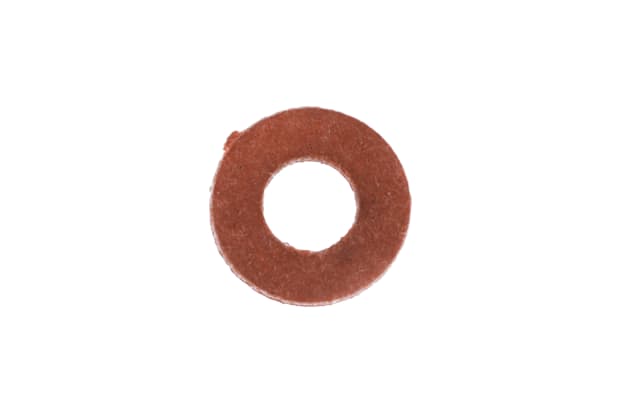
Fibre Tap Washers
The unique property of a fibre tap washer - sometimes referred to as vulcanised fibre washers - is that the material naturally expands when it becomes wet. In theory (and often in practice), this helps it to perform more effectively as a sealant.
Widely used in many areas of plumbing, fibre washers tend to be somewhat easier to compress than rubber or nylon versions. This can mean that they are at less immediate physical risk of damage from over-tightening, potentially leading to a longer lifespan depending on the tap type and how it’s used. One potential downside to this property of fibre washer material is that the tap itself may require more turns, or slightly more manual force, to fully shut off than with some other tap washer types.
In terms of causes for replacement, whereas nylon will eventually wear out, and rubber will split or crumble, vulcanised tap washers tend to break down or begin to rot away after extended use.
Ceramic Tap Washers
Ceramic tap washers, often called ceramic disc washers, tend to be found on newer tap assemblies. They are commonly found on so-called ‘quarter-turn’ taps and monoblocks (mixer taps), where the operating mechanism doesn’t require rotating the tap head through multiple turns to start or stop the water flow.
They also work differently to the other more traditional sealing washer types outlined above. In a tap that uses ceramic tap washers, a pair of close-fitting slotted ceramic discs replace the more standard nylon, rubber or fibre washer. One of the two ceramic discs is fixed in place, while the other can rotate through 90 degrees (hence quarter-turn).
When the tap is in the ‘on’ position, the openings in the washers are aligned, allowing water to flow through both discs and out through the spout. When the tap is shut off, one ceramic disc rotates so that the slots no longer align, and water is effectively blocked from passing through.
There are various advantages to this type of mechanism:
- Ceramic tap washers are hard-wearing and highly resistant to water erosion, meaning that they tend to last a long time
- They’re very low friction in operation, further contributing to both longevity and a smoother, easier tap action - hence being used more often on lever-style taps
- While they will eventually need replacing just like any other washer, ceramic discs are widely available, and there are relatively few different size options to choose between when it comes to ceramic tap washer spares
How to Choose the Right Tap Washer
When it comes to selecting tap washers, the most important choice usually comes down to picking out the right size for your tap assembly. While many taps can cope with a range of washer types (with the exception of ceramic disc taps), one particular tap washer material will probably be best for your specific install location, tap type, and general style of use.
Tap Washer Choices by Size
What type of tap washer should I buy? The one aspect that tends to cause more confusion and uncertainty than any other regarding this question is often getting the correct sizing.
Depending on the tap type and the specifics of its assembly, you may need large tap washers, mudguard washers, small tap washers, or even mini versions. Commonly used washer sizes for various indoor or outdoor taps include:
- 1-inch tap washer
- 15mm tap washer
- 16mm tap washer
- 9mm tap washer
- 17mm tap washer
- 20mm tap washer
- 32mm tap washer
- 40mm tap washer
Similarly, it’s worth noting that many tap washers are also listed and sold by metric or ‘M’ size ratings (M3, M4, M8, M10, etc).
By far the easiest way to ensure you’re picking out the right washer size for your tap is to physically remove the old one and measure it. That way, when you decide to buy tap washers online, you’ll be able to sort products by the exact size you need with a single click.
Alternatively, if you are a professional or are working with multiple different types of tap, it can be more economical to simply buy a tap washer replacement kit. These come with a range of common washer sizes, so you’ll be covered for almost any replacement you need.
Compare Tap Washers
If you’re trying to make a decision between different types and sizes of commonly-used tap washer products - for example, rubber tap washers vs nylon or fibre - it can be helpful to compare tap washers directly. The table below should help with this, giving a general illustration of some typical uses for various different washer kinds and sizes.
Plain Nylon Tap Washer
Size :
- M3
Material :
- Nylon
Applications :
- Household taps
Plain Vulcanised Fibre Tap Washer
Size :
- M10
Material :
- Fibre
Applications :
- Industrial applications
How Do You Replace a Tap Washer?
Can I change a tap washer myself?
In most cases, the answer is yes. However, you will need access to a few common tools, plus to have a basic understanding of the role and function of a tap washer. You will also need to have familiarised yourself with the main parts of a tap assembly.
Fitting a new tap washer is not a particularly lengthy or complex fix. It will generally be a fairly hassle-free experience, provided you prepare the area properly, and learn the key steps to the job before you start. Important steps to take before tackling a tap washer replacement include:
- Blocking off the drain or plug hole (to prevent loss of any small components or fasteners)
- Shutting off the water supply to the tap you’re working on prior to any disassembly
Related Products
Tap Washers
Browse and shop tap washers online today, including products from RS Pro, our own in-house range.
Plain Washers
Plain washers are an essential part of any fastener assembly. Browse our extensive range online today.
Lock Washers
Explore lock washers and find a wide range of products to suit your requirements with RS.
